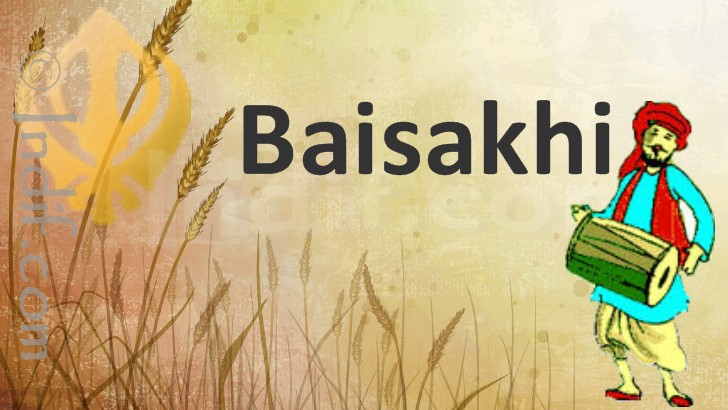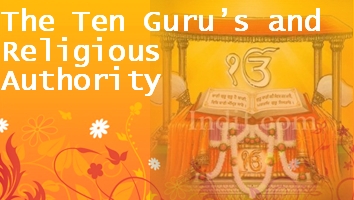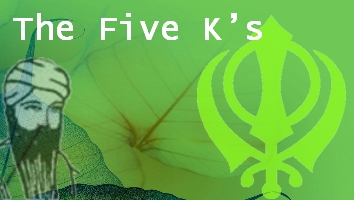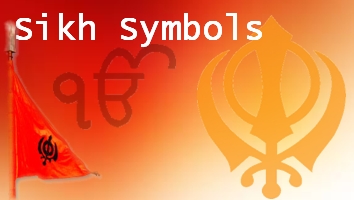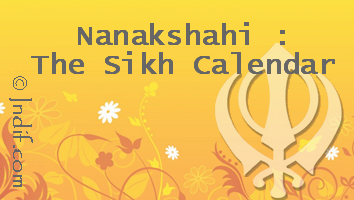Baisakhi (also called Vaisakhi) is a harvest festival which is celebrated on the thirteenth day of April according to the solar calendar. This day marks the beginning of the Hindu solar new year. In fact this day is celebrated all over the country as new year day under different names. It is celebrated in North India, particularly in Punjab and Haryana, when the rabi crop is ready for harvesting. It usually falls on April 13, falling on April 14 once every thirty-six years. It coincides with 'Rongali Bihu' in Assam, 'Naba Barsha' in Bengal, Puthandu in Tamil Nadu and 'Pooram Vishu' in Kerala.
Significance of Baisakhi:
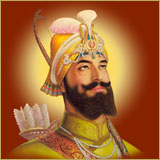 |
Baisakhi has a special meaning for the Sikhs. Baisakhi Festival is celebrated as the Sikh New Year and the founding of the Khalsa Panth. On this day in 1699, their tenth Guru Gobind Singh organized the order of the Khalsa and administered amrit (nectar) to his first batch of five disciples making them Singhs, a martial community. Again, on this day in 1875, Swami Dayanand Saraswati founded the Arya Samaj-a reformed sect of Hindus who are devoted to the Vedas for spiritual guidance and have discarded idol worship. This day is once again of immense religious import to the Buddhists because Gautama Buddha attained enlightenment and Nirvana on this auspicious day. |
Story of Baisakhi:
The story of Baisakhi Festival began with the martyrdom of Guru Teg Bahadur, the ninth Sikh Guru who was publicly beheaded by the Aurungzeb, the Mughal ruler. Aurungzeb wanted to spread Islam in India. The Brahmins of Kashmir approached Guru Tegh Bahadur (1621-1675),who was on the throne of the Sikh religion. They asked him for guidance on combatting the atrocities committed by the Mughal Emperor. Guru Tegh Bahadur stood up for the rights of Hindus and Sikhs and the Mughals therefore saw him as a threat.Guru Teg Bahadur offered his life for the freedom of conscience and conviction of anyone belonging to a faith other than his own.
After the death of Guru Teg Bahadur, his son, Guru Gobind Singh became the next Guru of the Sikhs. Guru Gobind Singh wished to instill courage and strength to sacrifice among his fellow men. To fulfil his dream, Guru Gobind Singh called on the historic Baisakhi Day congregation of Sikhs at Keshgarh Sahib near Anandpur on March 30, 1699.
The guru called upon his people to come forward to sacrifice themselves for the good of the clan. Pin-drop silence methis appeal. He repeated the call, with the same response. The third time, athirty-year-old man named Daya Ram Khatri stood up and volunteered. The guru took Daya Ram to a tent near by and returned alone after some time, his sword dripping blood. He repeated his call for volunteers four more times. The others who offered themselves were Dharm Das, a Jat from Delhi,Mokhan Chand, a washerman from Dwarka, Sahib Chand a barber from Bidar, and Himmat Rai, a water carrier from Jagannatha. Each of them went with him to the tent and every time here turned alone with his bloodied sword.
The guru went to the tent yet again,this time for a long time. Here appeared followed by the five men, clad in saffron-coloured garments. The crowd was astonished for it had Baisakhi assumed them to be dead. These five men were called Panj Piara or 'Beloved Five' by the Guru. The Guru blessed them with a Pahul ceremony. In an iron vessel, the Guru stirred with a sword called Khanda Sahib, the batasha that his wife, Mata Sundari Ji had put into water. The congregation recited verses from scriptures as the Guru performed the sacred ceremony. The water was now considered the sacred nectar of immortality called amrit. It was first given to the five volunteers, then drunk by the guru and later distributed amongst the crowd. With this ceremony, all those present, irrespective of caste or creed, became members of the Khalsa Pantha.
These Panch Pyare were directed by the guru to wear five K's. Hereon, he discontinued the tradition of Gurus and asked all Sikhs to accept the Grantha Sahib as their eternal guide. He urged them to come to him with their hair and beard unshorn to get baptized by the sword.
The suffix "Singh" derived from the Sanskrit word singha meaning "lion",was added to the name of all male Sikhs, while the women were to call themselves "Kaur", assistants to the Singh. To pay tribute to this event, prayer meetings are organised in gurdwaras across the country.
Celebrations:
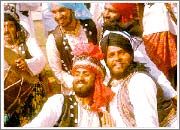 |
Festival of Baisakhi is celebrated with lot of joy and enthusiasm in the northern state of Punjab and Haryana. The farmers perform their own prayers and rejoice. For on this day, they commence cutting their harvest. Dressed in their typical folk attire, both men and women, celebrate the day with Bhangra and Gidda. Sweets are distributed, old enmities are forgiven and life is full of joy, merriment and everyone seems to belong. |
Fairs are organized at various places in Punjab, where besides other recreational activities, wrestling bouts are also held. The occasion is celebrated with great gusto at Talwandi Sabo, where Guru Gobind Singh stayed for nine months and completed the recompilation of the Guru Granth Sahib.
The Sikhs celebrate this day by visiting gurudwaras and distributing kada prasad. Processions led by the Panj Piaras or the five religious men are taken out. Kirtans and recital of passages from the Granth Sahib are also organized in gurdwaras, where people line up to receive the delicious prasad and perform kar sewa-that is, offering help in the daily chores of the gurdwara. \
The real celebrations are in the villages of Punjab when the crop is harvested. In Anandpur Sahib (the birth place of Khalsa) Baisakhi meals are organized in large numbers.
Regional Celebrations:
The auspicious day of Baisakhi is celebrated all over India though under different names and with different set of rituals. People of Assam celebrate it as Rongali Bihu. The Rongali Bihu marks the agricultural New Year at the advent of seeding time and is celebrated as the Festival of Merriment.
Bihar celebrates a festival in Vaishakha (April) and Kartika (November) in honour of the Sun God, Surya, at a place called Surajpur-Baragaon. This is essentially a village where, according to an ancient practice, people bathe in the temple tank and pay obeisance to the Sun God while offering flowers and water from the sacred river Ganga.
In West Bengal celebrate it as Naba Barsha. Naba Barsha is the celebration of Bengali New Year !! Naba Barsha in Bengal marks the first day of Baisakh. On this day people take a ritual bath in the Ganga and bedeck their houses with rangoli (floral patterns) drawn on the entrance of their homes with a paste made of rice powder.
Kerala celebrates it as Vishu. In Kerala, it’s New Year time too. The Kerala New Year is conspicuous for an exchange of gifts and for alms-giving, while Tamil Nadu celebrates it as Puthandu, the tamil new year ceremonial processions are taken out, with richly caparisoned elephants swinging along to the beat of drums.
While in Kashmir, a ceremonial bath and general festivity mark Baisakhi while in Himachal Pradesh devotees flock to the temple of Jwalamukhi and take a holy dip in the Hot Springs.

